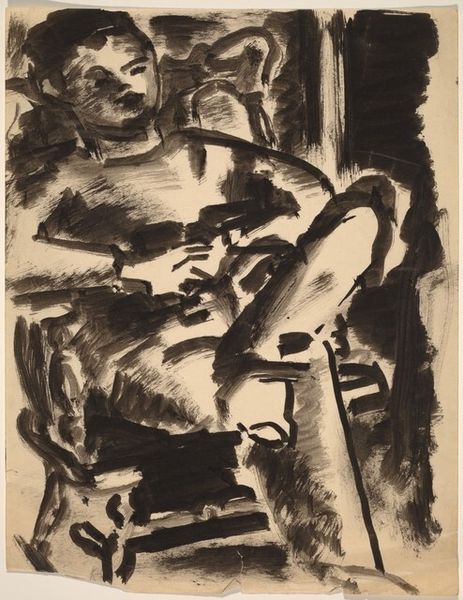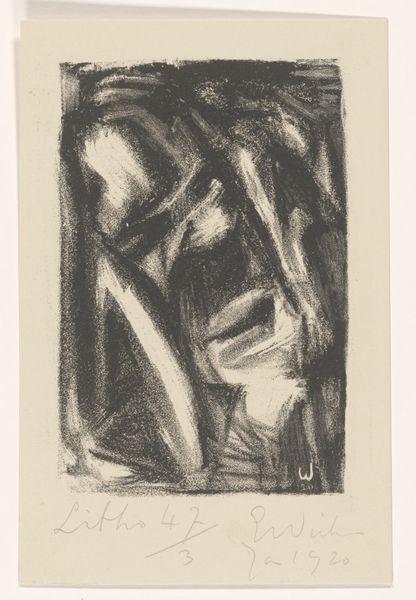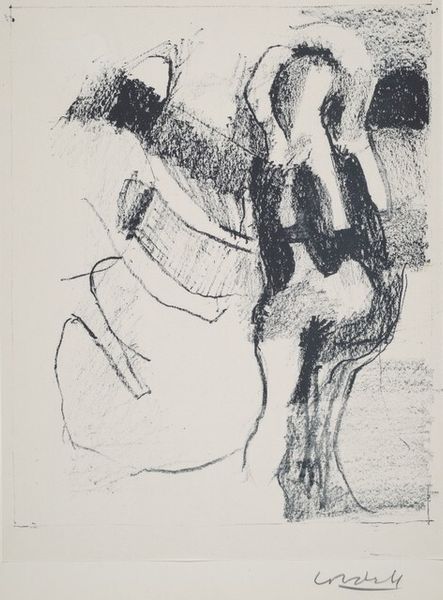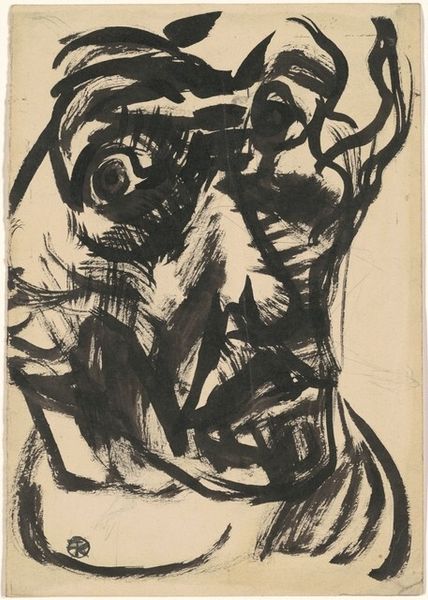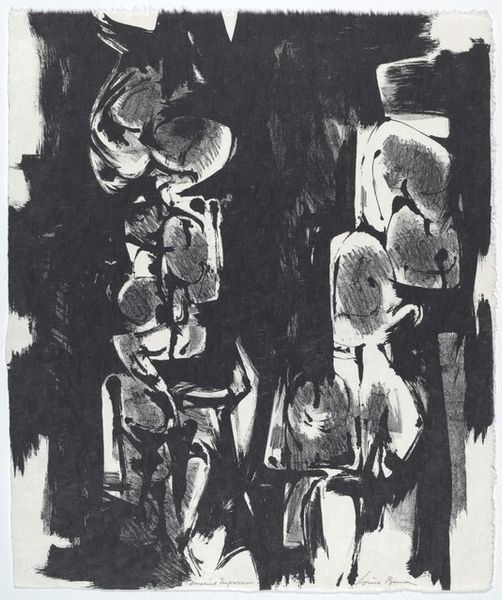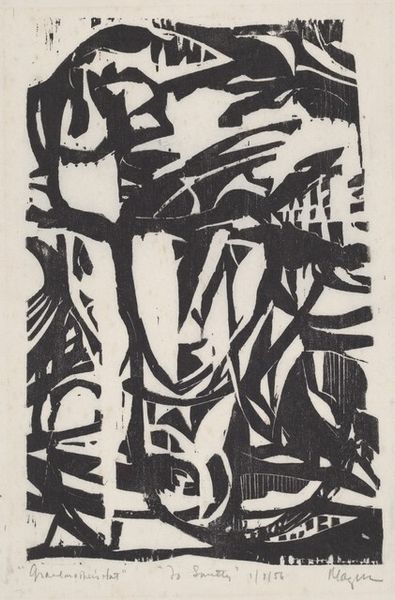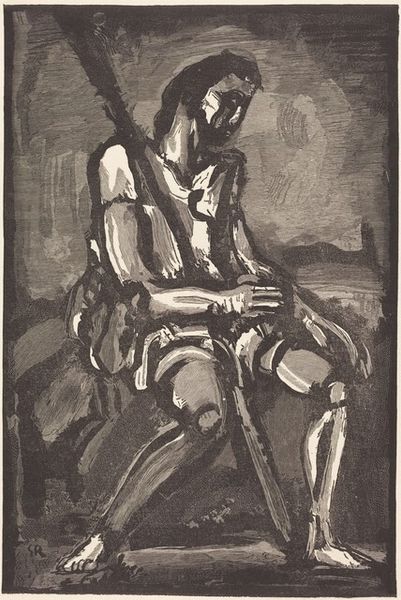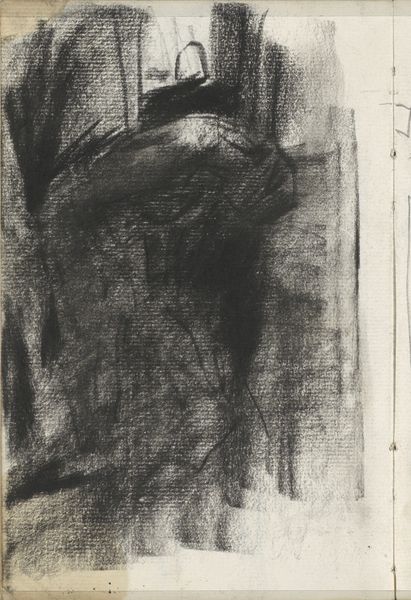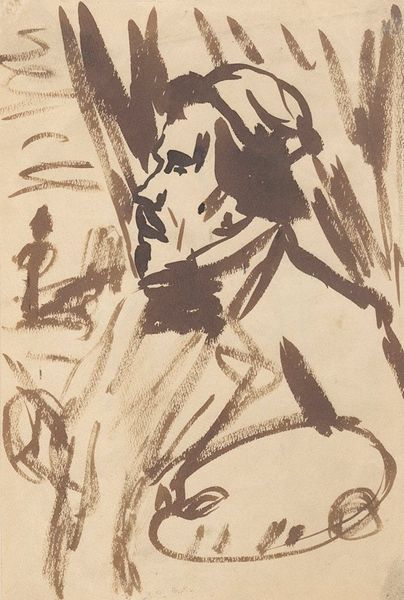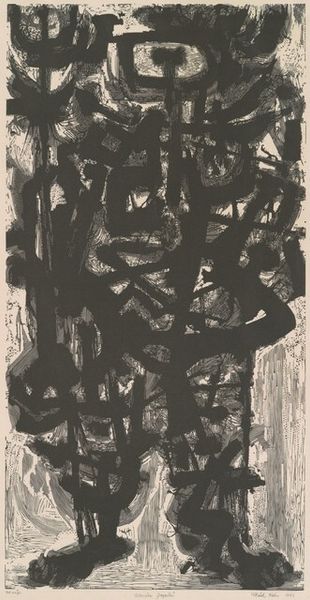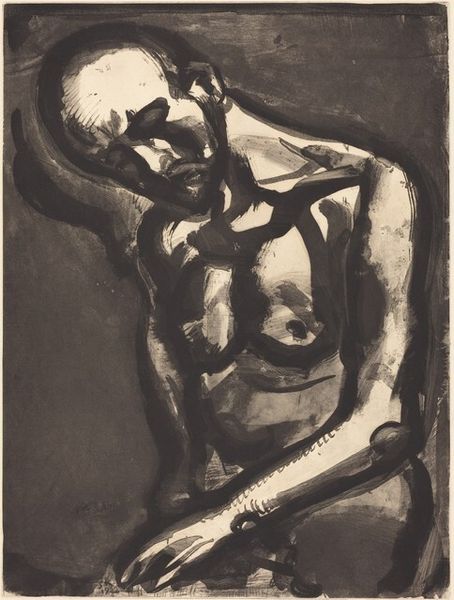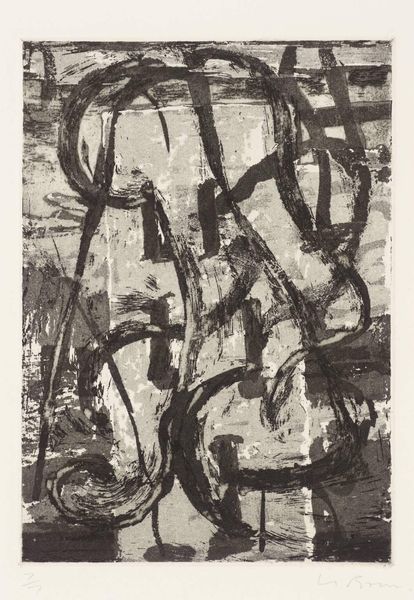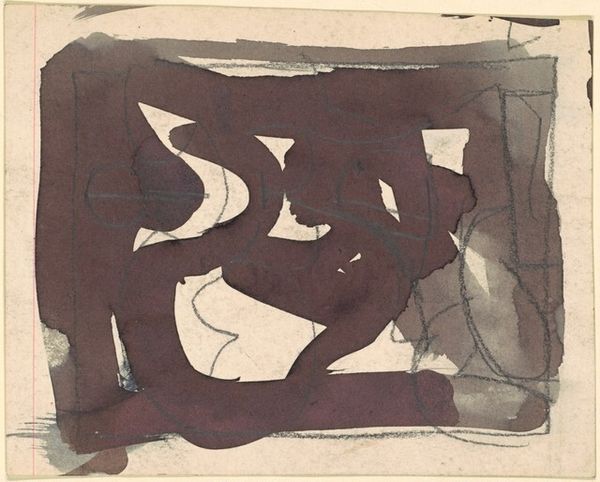
drawing, ink
#
portrait
#
abstract-expressionism
#
drawing
#
self-portrait
#
ink painting
#
charcoal drawing
#
figuration
#
ink
#
monochrome
Dimensions: overall: 33 x 20.2 cm (13 x 7 15/16 in.)
Copyright: National Gallery of Art: CC0 1.0
Curator: Here we have Mark Rothko’s “Portrait of a Figure with Head Tilted Left,” executed using ink on paper. Editor: My first impression is a sense of brooding introspection. The stark monochrome and gestural strokes feel turbulent. Curator: Yes, Rothko’s early work showcases this interest in the expressive capabilities of figuration, specifically the line quality of his strokes. Observe how the density of the ink modulates, creating depth. The work uses quick strokes, an approach associated with portraiture but almost anti-formal. Editor: Given Rothko’s Jewish heritage and the historical context of mid-20th century America, this image raises several questions of displacement and visibility. I am drawn to the use of monochromatic abstraction, in relation to broader political and social climates of identity formation in the face of assimilation and rising antisemitism, the almost violent brush strokes a reference to a loss of place. Is it simply self-reflection, or an expression of profound alienation? Curator: It's compelling to read that angst into the image. Considering Rothko later moved to pure abstraction, one can say that his early work was his formal investigation into stripping the nonessentials, gradually refining toward what he thought was a universally moving aesthetic experience by eliminating symbols all together. Editor: By that account, the artist gradually removed signs of his historical reality as his painting advanced stylistically. His earlier, more clearly figurative, works such as this one, demonstrate Rothko as a person of a particular background responding to a particular history; yet his ambition was, precisely, to elide it. Perhaps such stripping away reveals something crucial about the midcentury, its search for transcendence or neutrality. Curator: A telling point; his desire was not just a style, but a philosophy of universality achieved through a structural distillation. Editor: An erasure as an artistic pursuit. Fascinating, and worth remembering as we walk through this exhibit.
Comments
No comments
Be the first to comment and join the conversation on the ultimate creative platform.
